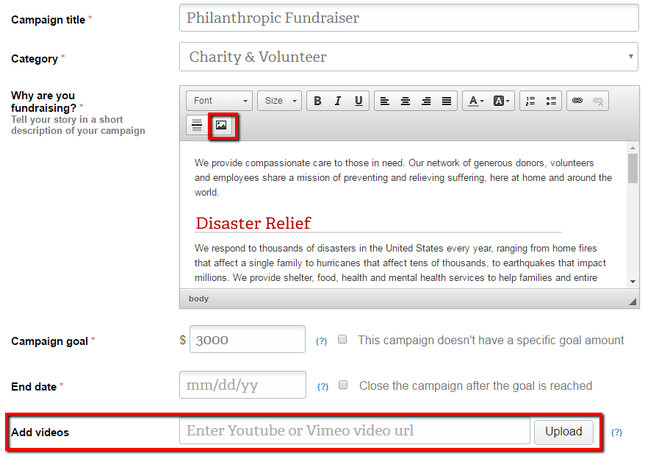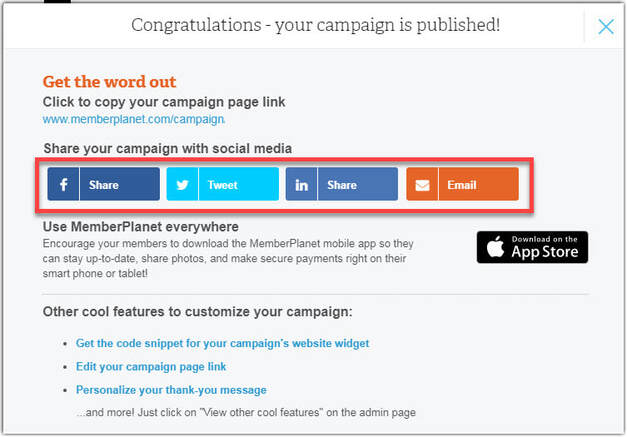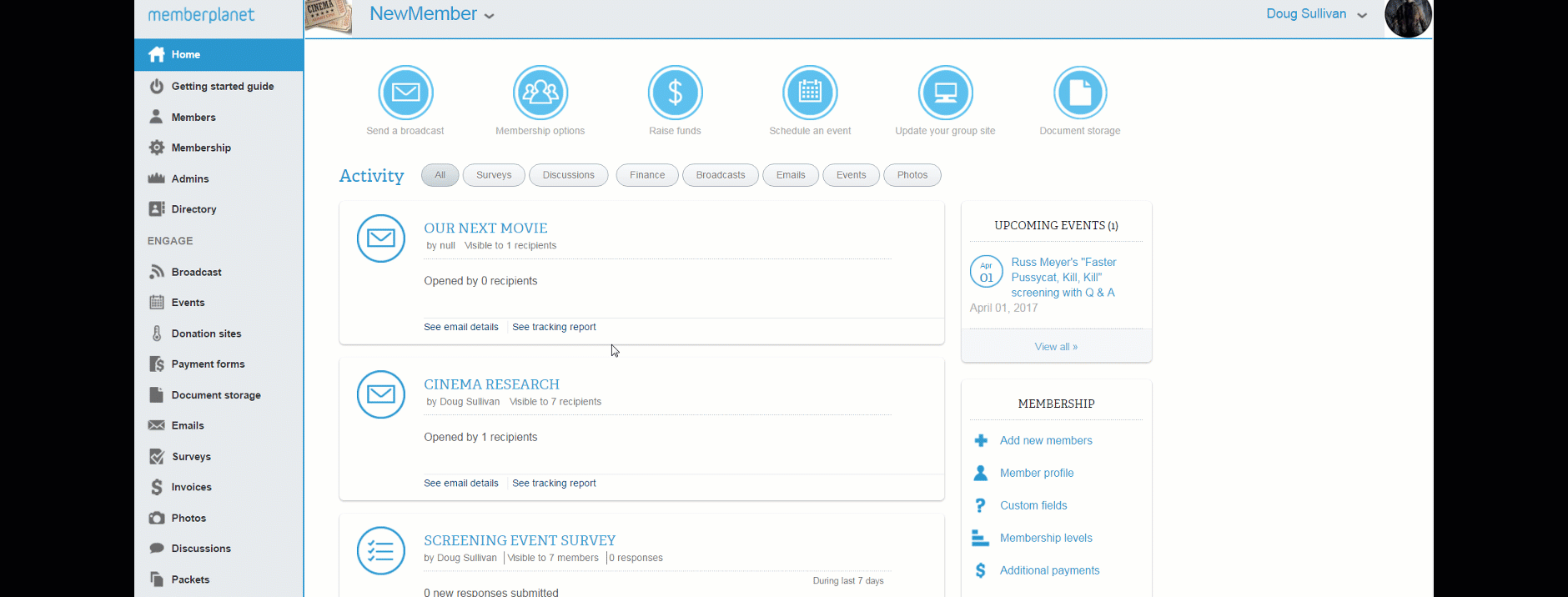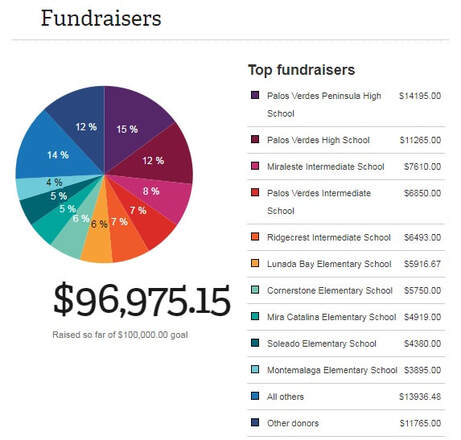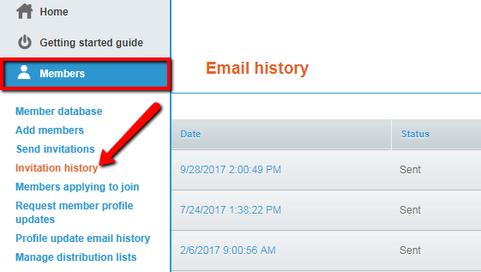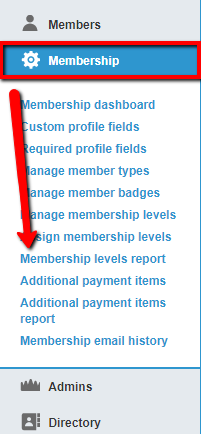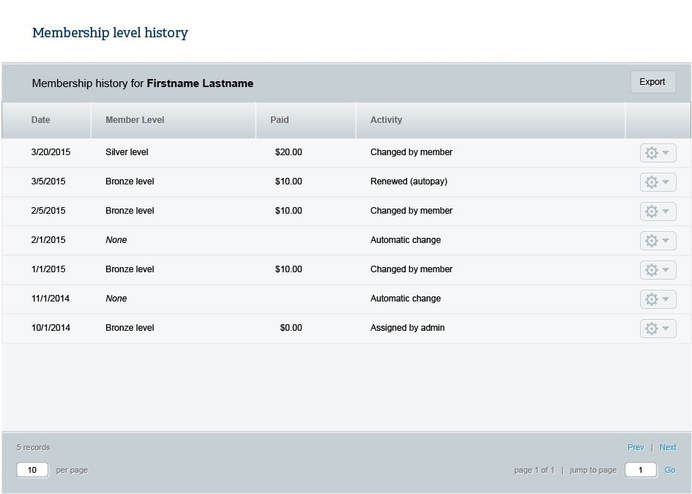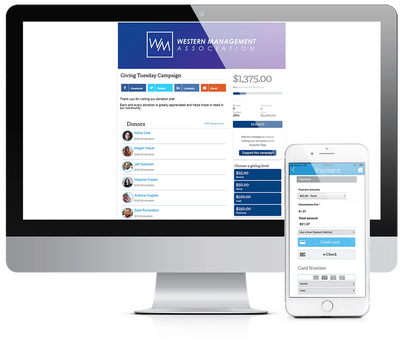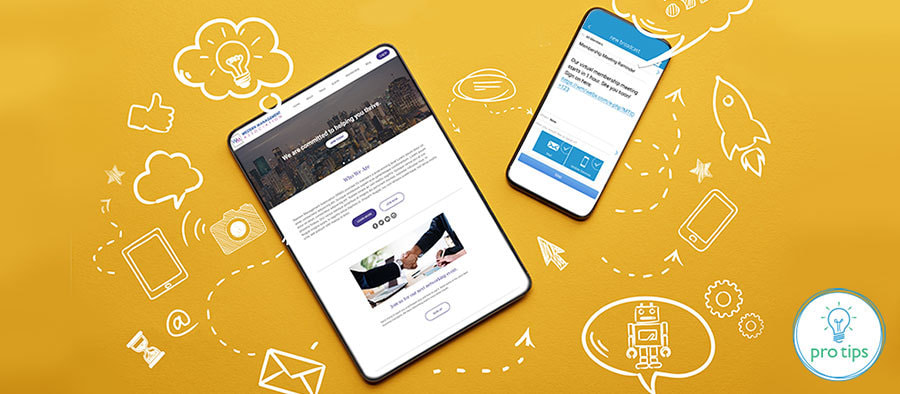|
Successful associations have more than occasional high-performing components or chapters; they’re built upon a base of overall achievement and solid quality control. However, if quality control is an issue, that could hinder chapter success. According to Mariner Marketing’s Chapter Benchmarking Report, 71 percent of survey respondents indicated that quality control is considered an issue by headquarters (HQ). Not surprisingly, 40 percent, which was the majority of survey respondents, described it as their top concern – namely, that chapter products and services, whether they're virtual events, membership meetings, and the like, can be uneven or frequently low quality at worst. Let’s put those worries to rest and look at ways to engage all of your chapters and bring the overall quality and performance of them closer to that of your best. These 6 tips will show you how.
1. Foster friendly competition Analyze the metrics you use to measure your chapters and identify your most consistent performers, then use that data to create a single yet realistic goal for chapters that are struggling. It can be tied to an annual membership drive or philanthropic event where participation within a chapter can boost its overall success. This allows for even your under-performing components a fair chance to succeed, while potentially inspiring them to see their potential going forward. You can also opt to reward creativity and offer the component with the freshest idea or concept for membership recruitment (for example) the chance to lead that online event for an inter-chapter competition.
2. Utilize the buddy system
Take advantage of the metrics you use to measure quality control and take note of which components do well and those that have considerable work to do. Break it down by area to distinguish between member services, fundraising, and activities. Pair top performers with struggling chapter reps. This will not only help build camaraderie and rapport between your chapters, but it will allow metric leaders to use their own words and approaches to be a resource to those who are underperforming. Sometimes help from peers can work wonders – it’s simply the way chapter leaders hear certain tips or approaches from someone in their shoes that can turn their own metrics around. Buddy up and let chapter-to-chapter leadership flourish. 3. Empower your chapters with the tools they need Another way to boost chapter performance is to arm chapter reps with the necessary tools to effectively manage their chapters. Since many chapter reps are volunteers with full-time jobs – making the most of their limited time and resources is paramount. Make sure you cover the basics; every chapter should have a toolkit that includes a chapter website, communication, and digital marketing tools to promote the association’s brand while maintaining consistency. If you can, include online event management tools and best practices for promoting activities and events. Make your toolkit even more robust by providing an online community for members to interact with each other that include online database management. A comprehensive association management system (AMS) maximizes the time of your chapter leaders while providing them the most useful tools to recruit and retain members.
4. Recognize stellar chapter performances
Provide your most successful chapters with the recognition their hard work deserves, and also recognize those who made an outstanding effort. You can publicize a short awards ceremony on social media or post names on your website to really highlight standout performances. Include a variety of categories and awards such as a Rising Star Award, Most Creative Event, etc. so that people can vote for the winner online prior to the ceremony. A comprehensive AMS will have secure, online polling functionality, so you can leave the voting up to national-level staff, or you can open it up to everyone, which will further enhance the bond among your components. Everyone loves a moment in the spotlight, and it gives those who aren’t receiving awards reason to strive in the following year. You can also offer prizes in terms of discounted dues membership or a special section in your email newsletter to more frequently highlight chapters that are striving to go above and beyond. 5. Create a system for officer transitions Consistency is a key marker of ongoing success. One way to ensure chapters maintain their best elements year over year is starting with a standardized toolkit and support resources to onboard new leadership. A standardized toolkit will help officers keep all relevant documents and reports in an easily accessible place like an online portal, which would be a great start for an incoming officer. It goes without saying that outgoing officers should help train incoming officers. It’s also crucial to have an ongoing FAQ, ideally one passed down from officer to officer. It essentially becomes a success guidebook for each new officer to learn from mistakes or common questions previous leadership experienced and solved. Making sure your chapters have these support resources in place sets up incoming officers for success. You can also take time to speak with successful chapters about the strategies they employ during officer transitions and take advantage of what works for them by passing it along to all your other components. 6. Build strong chapter rep relationships Your chapter reps are people who’ve volunteered to lead, who were willing to take on the responsibility of that role because they truly support and believe in the mission of your association. Strengthen your bond with them by reaching out; engage them by getting to know their interests and personal goals. Help them feel seen not only as a chapter rep but as a person you respect. Emails and text messages are fine, but phone calls and video chats are better. Another suggestion before hopping on the phone is to send a simple chapter leadership poll to understand their needs and expectations. Review their responses on your call and use this connection to also clearly establish your expectations from them and the chapter; illuminate them by defining what success looks like to you. Share the metrics you’ll be using to measure their chapter success while also clearly stating your goals.
Following these tips will help you better support struggling chapters by maintaining quality control and offering a little more TLC when it’s needed. Consider implementing a solution that will empower you and your components to accomplish more, maintain visibility, and manage membership with ease.
Updated since original publication on 1/9/20.
Dealing with officer transition is a busy time of year for most organizations. If you’re part of the management team helping onboard new recruits, being super organized and having structured training sessions allow that process to run more smoothly. And if you’re an incoming officer, staff member, or new admin, or someone who’s just been given more responsibilities in managing the organization, learning the ropes might feel like drinking from a fire hose.
We’re a few steps ahead, though (and if you’re reading this, you are, too!) The following resources will help you navigate this period of transition like a pro. The objective is to build upon the great work you’ve already done rather than start over every time.
Support Documentation The Support Center is an online resource for general memberplanet administrators. If your organization has an enterprise account with memberplanet, first check your customized success site for how-to documentation and FAQs. Our support articles have detailed, step-by-step instructions, examples, screenshots, and sometimes video. Admin role management: How to give memberplanet admin access to officers in your organization. Manage bank access for administrators: Choose admins/staff members who are allowed to access your organization’s bank info. Set up a new bank account for your organization: Our secure bank verification process requires a government-issued ID for your group to receive funds in a new account. Review reports for copy events, forms, and more: Each feature has its respective reports section, and any type of transaction data can also be viewed in the All Payments Report. Forms, donation campaigns, and events can be copied and edited.
memberplanet Blog For actionable tips, training strategies, and leadership advice, visit our blog category: officer transition. Articles include resources for both incoming and outgoing staff or administrative users.
The days of cash being king are over. Unless you’ve been living under a rock for the last couple decades and somehow remained oblivious during the COVID-19 pandemic, you’ve noticed a societal shift toward electronic or contactless payments. What does this mean for you and your organization? Ignoring this trend can seriously hurt the future growth of your organization, whether you’re managing a local nonprofit, chapter of a multi-level association, golf club, or any other group. Credit card processing fees may seem like a deterrent, especially if your group consists of volunteers, but the benefits are enough to outweigh whatever costs you incur – and we have proof. Check out these five payoffs of accepting electronic payments.
1. Appeal to a wider audience
Studies say that on average, Americans have four credit cards each, and the majority of consumers pay with debit or credit cards instead of cash. This means that accepting credit card payments increases your ability to attract potential members or donors who find electronic payments more convenient. You can connect with a larger audience to recruit and build your organization, reach more donors for your campaigns, and increase sales for your merchandise or services.
2. Increase revenue
Appealing to a wider audience translates into higher revenue. Research shows that people are willing to spend more on their credit cards than when making cash purchases. This has obvious benefits for fundraising campaigns, as it can lead to bigger donations from individuals. The New York Times cites several studies that demonstrate the increase in spending with credit versus cash of at least 5-10%. Another often-cited study states people spend 12-18% more when paying with a credit card.
3. Direct deposit increases cash flow
If you’re paying out of pocket to reserve a venue for your organization’s event because members couldn’t pay in advance, that’s a cash flow issue. Accepting electronic payments increases cash flow by limiting the time it takes for money to appear in your account. Instead of waiting for members or donors to mail a check, then depositing the check, and then waiting for it to clear, funds can be deposited directly into your account and processed quickly. This also removes the burden of holding onto large cash sums until you can make a deposit.
4. Build credibility with credit cards
5. Simplify recurring payments and donations
Organization members and donors can set up recurring membership payments and donations. memberplanet makes this easy by allowing you to accept electronic payments that will be processed and deposited directly into your designated account. Simplifying the payment process makes it easier to collect membership dues and retain current members, and is beneficial for collecting donations during fundraising season.
Accepting electronic payments simplifies the exchange of money for you and anyone you collect payments from. This is beneficial and convenient for collecting membership fees, receiving donations, and selling event tickets or any other product or service your offer. With an evident shift from cash to credit, it is essential to offer a variety of payment methods in order to retain members, grow your organization, and maximize potential revenue for your organization.
Updated since original publication on 05/20/17.
Traditional fundraising methods still have their place. However, due to COVID-19, the world has shifted toward an increasingly digital landscape, and it may be time to re-evaluate your old techniques. Online fundraising offers a multitude of benefits and can help you surpass your fundraising goals when you use the right platform. Don’t be put off by the fees — here are five reasons why you should fundraise online.
A bigger payoff
You might be concerned about the fees associated with online fundraising and whether they will cut into your net goal. It is important to do the research and see how various sites structure their cost.
Convenience
Electronic payment methods make raising money faster and easier than ever, because, let’s face it – not everyone carries lots of cash or a checkbook these days. With memberplanet’s mobile app, users can donate directly from their phone at any time and easily opt in for an automatic, recurring donation. By offering the option to collect all payment types both onsite and online, you can access a larger network of donors. This will allow you to raise more money for your cause.
Security and credibility
Go viral
One of the main benefits of launching an online fundraising campaign is its potential to go viral. This takes you out of the typical sphere of donors and opens you up to supporters you wouldn’t reach with traditional methods. This can help you reach your monetary goals faster and even surpass them. Look for sites that offer a direct link for social sharing from your donation page to maximize exposure. Note to memberplanet users: Make use of our built-in URL shortener or share on social media directly from our platform to save time and (when you need it) character space. Online campaigns give you the freedom to create a donation page that reflects your cause. Customizable templates and forms let you streamline the look of your fundraising page. You can add photos, videos and other interactive features to increase interest and support, which translates into larger dollar amounts.
Crowdfunding is mainstream
Crowdfunding has gained momentum over the past decade and is only becoming more popular. It offers easy payment methods for donors, makes tracking donations easier for admins and is easily shareable across social media. It’s an effective and efficient way of framing a fundraising campaign. memberplanet users: It’s never been easier to set up a donation page. Customizable templates and forms let you streamline the look of your fundraising page or marketing campaign. You can add a live donor ticker to monitor the campaign’s progress, as well as photos, videos and other interactive features to increase interest and support, which translates into larger dollar amounts. Paying a small fee shouldn’t be a deterrent when weighed against the many benefits of the platform. Streamlined payment methods, global reach, and customizable templates are just some of memberplanet's features that will help you orchestrate a better campaign and grow donations.
Updated since original publication on 5/15/2017.
As an organization leader, one of the highest mountains you’ll need to climb is reaching your fundraising goal. Whether you’re planning for a big Greek Week event or something small for a local nonprofit, running a successful campaign requires organization, dedication and clear definitions of your goal. Combining our fundraising features with these simple tips will help optimize your donations and reach that mountain’s peak.
1. Take advantage of online convenience
The whole point of fundraising online is to make it as easy as possible to meet your goal. Using a template (we've got a free library templates!) will cut out a few steps to give you a head start, so you can get your fundraiser launched fast.
Another major convenience is tracking - without the actual paperwork. Transaction-level data is available in the Reports module, and if you're an HQ staff member who's overseeing multiple local chapters or child groups, you can view aggregate reports. Donors will automatically receive email receipts, which can also be customized to include info about your 501(c)(3) organization for tax reporting purposes (check with your accountant first). Let's get started! First, make sure you're logged into memberplanet and you're viewing your group portal, which displays your admin tools. 1. Click Donation Sites on the left navigation sidebar 2. Select Create Donation Site from the submenu
3. Select a template for your campaign
4. Follow the rest of the prompts to create a donation campaign Offer electronic payment methods. Making the most of digital fundraising techniques can help you reach a larger pool of donors, not just the ones who are willing to pay by check or cash. Offering electronic payment methods gives members the option to donate by their preferred payment method, use their phone, and sign up for automatic, recurring donations. Optimize your page for viewing on any device. Online fundraising also allows you to share information quickly to a large audience, so make sure your fundraising page is designed for optimal viewing on any device. (If you’re using memberplanet, we’ve got you covered).
2. Use visuals to appeal to your audience
Incorporating visual elements, such as video and photos, is an effective way to create a voice. It’s important to not just think about your plan for obtaining your goal, but to also focus on why it’s important. Conveying the “why” to potential donors deepens their connection with the cause and appeals to their emotions, which translates into more money for your organization.
To add photos and video to your Donation Site, select a template to edit, or select the existing campaign you want to edit. Click the photo icon to upload photos, or copy and paste a video URL in the Add Videos field.
3. Reach out to your inner circle
4. Adopt a social media strategy
We see social media as part of a larger multi-channel communication strategy, which is to communicate with members using the channels (email, text message, social media, etc.) they prefer. Today,72% of the public uses at least one social media platform. And a 2019 nonprofit report stated that $2 billion had been donated through Facebook. If you’re still not using social media to fundraise, you’re missing out on a great tool for spreading the word about your campaign in a fast, cost-effective way. Figure out which social media platforms your target demographics are using, and start by engaging them on those platforms.
memberplanet users: As soon as you publish your donation campaign, you can share your site to social media directly from the platform, mobile app, or the page itself.
Use our built-in URL shortener if you’re on a character limit, or customize the full URL.
To customize the URL or get the short URL, click on the campaign you want to manage.
If you are leveraging peer-to-peer fundraising (and you absolutely should!), you can enable a pie chart on your site, which will display how each of your fundraisers/supporters are contributing to the campaign. Friendly competition by way of seeing how others are stacking up also drives donations!
6. Follow up
Set up an automated thank-you email to your donors to go out immediately after receiving funds. In it, you can encourage them to spread the word about your campaign. Go the extra mile and share the impact of your campaign with donors, staff, and volunteers. Leave them feeling a genuine sense of gratitude from you. This encourages them to participate in upcoming events and fundraisers from your organization. You can easily send an email to all your members and participants, but it’s better to tailor messages to target specific recipients, such as generous donors and key players of your team. (Learn more about how to add a thank-you message.)
Our fundraising features were created to help you build a great campaign and maximize donations. Now that you know some excellent ways to reach your fundraising goal, you can focus on getting to the top of that mountain.
Updated since original publication on 3/8/18.
You’re trying to keep things running smoothly for your association (or your chapter), but are spending too much time keeping track of spreadsheets, finances, and events. Whether you’re new to your management role or going through a time of officer transition and feel like you’re running in circles, you’re not alone. If you’re ready to pull all your hair out, read this for some membership-management relief.
1. Start by organizing your members
If you aren’t already, consider using membership levels to organize your members. Membership isn’t necessarily a one-size-fits-all option, and that’s OK. Associations often collect more if they allow members to pay their membership dues and give a donation at the same time. The generous person/member company willing to pay a couple grand (and then some) can be part of a top-tier membership level (a high-value one with all the benefits and perks), while folks with a smaller budget may be able to access basic membership for $20. Some associations even offer free memberships as part of a strategy to entice users to upgrade to paid status later on. Give the option to automatically renew membership. It’s great to have different levels, but you still need members to renew – and they won’t always remember (or want) to manually take money out of their paycheck. No matter how much they love you and your cause, making it inconvenient for your members to part with their money is painful, so give them the convenient option of an automatic payment plan. For members who opt to pay manually, or those who are past due, send reminder emails to keep them informed. Communicate to members using the levels, types and auto renew statuses. Your messages should be customized to target specific recipients, whether those are your top-tiered members, lapsed members, or another list based on variable data.
2. Get mentally organized to save time and sanity
First, set realistic goals. Make them ambitious but practical; define targets that you think your team can actually achieve based on last year’s or last quarter’s data. How many members can you obtain, retain, or connect with in a realistic timeframe? Now that you’ve got some targets, recognize the fact that you’re not likely to hit them unless you use a calendar. Whether it’s a smartphone app or a physical appointment book, a calendar is great way to get organized and hit consistent milestones or deadlines. Set your priorities at the beginning of each day. List them in order of importance. Priorities help you finish what you start, which is always a good thing to do in business (and in life). Review each of your goals at the end of each day. See what you achieved, what you need to achieve, what you did well, and what you could do better tomorrow. Finally, clean up your workspace. Many leaders find it difficult to stay mentally organized if their physical workspace isn’t squared away. An office or designated work area should help improve productivity, not serve as a nesting place for small rodents. So, throw away that stack of unused lunch coupons, sift through the mound of papers, and set traps, if necessary.
3. Delegate the right tasks – and know which ones to do yourself
Delegation is simple – but if you’re not doing it right, you could be wasting even more valuable time. First, you need to identify the tasks you should delegate and the ones you shouldn't. Here’s some of the best stuff to pass off:
As a leader or manager, it’s important to let go of some of these jobs, even if you love or have gotten used to doing them. Whether your association has 20 members or 20,000, it pays to stay organized, as well as to make sure the memberships you offer are flexible and diverse enough to attract new members and retain existing ones. Managing membership can be tough, but it doesn’t have to be a hair-pulling experience. Visit memberplanet to explore an AMS that will help your association succeed.
Updated since original publication on 12/20/2017
You have a hunch about how your organization is doing, but a gut feeling is not going to cut it. You need to look at specific data to see what's working and what isn't. Don't just jump in and start measuring absolutely everything. Pro tip: First focus on these three crucial reports ─ email tracking, invitation history, and levels reports.
1. Email tracking report
Even the busiest membership manager needs to track ─ at the very least ─ email rates. With all the email campaigns you create, it’s helpful to see whether the messages are benefiting your constituents… or not. Here’s a look at three email rates to keep your eye on. These key performance indicators (KPIs) will let you know whether folks are actually receiving, opening, and reacting to your emails:
Based on a recent email benchmarking report, the average open rate for nonprofits is 25.5%.
The report indicates that the clickthrough rate for nonprofits is 4.10%.
One report cites a 0.5% bounce rate for nonprofits, although a popular email service provider reports a 10.25% bounce rate for its nonprofit customers. To view opens, bounces, and clicks to your email campaigns on memberplanet, hover over Emails in the left navigation sidebar, then click Email Tracking Report in the submenu. Any type of email marketing service (even the ones that let you create an account for free) should provide these basic metrics.
For the date range selected, your email campaigns will be displayed with corresponding metrics.
2. Members invitation email history
You've worked hard to boost membership. If you implemented a membership drive or promotion, you probably emailed prospects to join your organization. What were the results? If you're using an association management system (AMS) or membership management system, it should track that. On the memberplanet platform, you can view your membership email history to track who was invited and how they responded. It’s a best practice to periodically send out invitations to prospects. To become members, recipients only need to make a membership payment or provide info to sign up for a free membership, if you offer the option. A membership invitation history report shows which admin sent the invitations and when, who opened it, and whether the recipient accepted the invitation. To view your group’s member invitation history on memberplanet: On the left navigation sidebar, hover over Members and click Invitation History in the submenu.
3. Membership levels report
Sometimes, in a rush to drive membership, managers and admins forget to look at overall membership tiers or levels activity. If you’re only looking at new prospects who signed up for a free membership level, you might not quite get the complete picture. Most organizations have different levels of membership, including free and multiple paid levels. An AMS should have a levels activity report readily available, which will save you a ton of time. The alternative is viewing manually updated reports in Excel. A membership levels report gives you a bird’s-eye view of how many members are on each level, as well as a granular view of the history of each member’s level. Are you finding that a lot of members have downgraded their membership level? If that's the case, you'll know which members and levels to cater to more frequently. You may need to review member benefits to ensure each level offers the value they’re willing to pay for. You can also target members on a specific level and influence activity by creating events and content to keep members engaged. Here's how to view the membership levels report on memberplanet:
2. On the levels tab, click the gear icon for the membership level you wish to view
3. Select View Members from the dropdown menu
All this business intelligence will help you become a better, more informed membership manager or admin. You also can look at other metrics, such as survey results, donations, payments, events, RSVPs and so much more – we have reporting for just about everything on the platform. If your organization has chapters or components, staff can benefit from a customized membership dashboard, aggregate reports and ad-hoc reporting, too. Visit memberplanet.com to learn more.
Updated since original publication on 03/02/2018.
There’s no question about it – you need to collect online payments and give your staff the tools to do so as well. But how you do that can affect the membership experience, efficiency of administrative operations, and your financial transparency.
Integrated payments technology provides a solution that ties together your online payment processing, your membership data, and administrative tasks – to get them working autonomously and in sync. The result is a more seamless experience for your members and efficient workflow for your staff.
Take for example these benefits that integrated payments can provide to your organization, and further elevate its performance.
Enhanced membership experience You’re always striving to provide your members – your customers – a secure and modernized payment experience. An integrated payments solution can connect your member database with online payment processing functionality. Your members benefit from convenient options to pay how, when, and where they want. Your organization can offer one-time payments, recurring and installment payments for dues, fundraising, event ticketing, or anything else – and your organization’s branding stays front and center on every form or website page. Bank-grade security features keep your member data uncompromised, ensuring that your brand remains trustworthy. Payment and personal data are tokenized and encrypted and can only be deciphered by the issuing bank during authorization. When combined with a members-only website, you have the ability to give members the customized view they’ve come to expect. Upon logging in to your website, they can manage their account and view personalized info that matters to them. Frictionless join and renew process Do you make it easy for people to join your organization? Is it as frictionless as possible for existing members to renew? The right integrated payments solution supports your member onboarding and application process and simplifies it. Whether new members need to go through a complex approval process or are systematically approved, you can capture the member data you need from one place. The technology can employ integration points on the back end for a dynamic approach, so those looking to join or renew can access the same URL – even if you offer multiple types of memberships at various prices. Integrated payments technology also contributes to increasing member retention rates with features such as auto-renewal, saved payment methods, and card updater services, which automatically replace an expired credit card on file for uninterrupted recurring payments. Increased productivity Eliminate inefficiencies for your staff with a solution that streamlines and automates administrative operations. Manual data entry, correcting user errors, and downloading info from one program to upload it to another can take hours out of the work week. Integrated payments technology consolidates the tools you need – email marketing, text messaging, online events management, fundraising capabilities, and financial reporting – on one platform. All that time spent on managing multiple programs, which also incur additional expenses, would be better spent on providing the best value to your members.
The memberplanet solution
Our payments technology is fully integrated with a suite of membership, communication, fundraising, and event tools on our platform. You and your staff gain actionable insights with real-time reporting and a centralized database of membership for both your members and potential members. A third-party payment processor won’t consolidate your data for you, which is why memberplanet’s integrated payments solution reigns superior. Streamline operations, spend more time on your mission, and keep a better pulse on your organization – visit memberplanet.com to learn more about how we can help you manage, engage, and grow.
Updated since original publication on 6/18/19.
Membership is an organization’s most valuable asset. Without loyal members, your group will cease to exist. That is why it is so important to allocate a significant portion of your budget, time, and focus to retaining existing supporters while also adding new ones. Every expert has tips for success, but these are by far the best ones I've seen organizations make use of in spanning my 20 years of experience.
1. Define your value proposition
Your organization’s value proposition can be defined as the answer to the question: Why should I choose this organization over another? It’s your key differential, your competitive advantage, and what members should refer to when they explain why they chose to join. Being able to identify and drive value will help you build the foundation for your marketing strategies and materials – it should be front and center on your website. In order to sell it, you need to make sure all of your staff, volunteers, and members know and understand what it is – if they can’t, then what you consider to be your organization’s most unique quality might not actually be all that unique. 2. Market where your members are The key to gaining and retaining members is to stay constantly visible, including digitally. Be present on the social media channels and online groups they’re in. Advertise in industry-specific publications and participate in industry-related events. Send email newsletters and updates. As a leader of your organization, you should be viewed as a credible source in the space. If you’re not constantly marketing your group on and offline, how will your members know who you are? 3. Leverage a member referral program No marketing strategy can beat personal recommendations and word of mouth. Great referral programs leverage members who are advocates of your organization. Your advocates should be willing to promote all the benefits they’ve gained by being a loyal member. If you haven’t pursued this before, make sure the process is simple and easy for your members to recruit on your behalf by providing relevant materials and incentives for doing so. Incentives can come in the form of free entry to an event or a discount on their membership. And if you are already utilizing this strategy, track its success and seek ways to continue to improve it. Always keep in mind that your constituents are your greatest assets. Make sure they are well equipped with training to answer questions and positively represent your organization.
4. Keep your existing members happy
Retaining your current members is even more important than obtaining new ones. Nothing defines a successful organization more than loyal supporters. The fewer you lose, the easier it will be to reach your growth goals and the less resources you’ll have to spend to do it. The key to maintaining your current membership base is to always drive value. Secondary to that is making it convenient to remain as a member of your organization. It’s critical to continually communicate your value to members, whether it’s through marketing automation, event notifications, email campaigns, or social media posts. Listen to your members as well – get feedback and their thoughts on how well you’re providing value. Take that information to further improve your value proposition and stay relevant in our ever-changing technological and social landscapes. These four tips can help an organization not just stay current in appealing to younger demographics, they also ensure that it continues to excel and deliver membership that is valuable and accessible. To learn more about how memberplanet can bolster membership for your organization or association, check out our dynamic solutions.
Updated since original publication on 6/24/19.
We’re all guilty of scrolling through Facebook or Instagram before our heads hit the pillow at night. While social media has become a popular way to kill time, it also has many practical uses.
As an organization leader, you are already aware of the necessity of branding across various platforms, so here are our top five ways to bolster your online presence by optimizing your social media engagement strategy, first and foremost with your own constituents.
1. Deliver digestible bits
Newsletters are great for providing various bits of information to your members all at once. Social media is best for delivering a brief, compelling message to a large audience, but you only have a small window of time to get users to interact with your post. Providing relevant, unique and easily digestible bits of info should be the focus of your social media strategy. Nobody wants to scroll through a Facebook post or read a tweet with three continuations. You can prompt users to click through to a website by providing a URL within your post where they can access more information.
2. Promote your cause
Social media is an efficient and cost-effective way to broaden the reach of your cause, mission, fundraising campaign, or any other promotion. Whenever you send emails to your members, ask them to follow your organization’s social media handles. And make sure your posts tie in the cause or mission that appeals to your followers. People in the United States average two hours per day checking social media, making it a great promotion tool. Note to memberplanet users: You can easily share your event or donation site to social media directly from the platforms. Group admins and members can also do this directly from the event site, donation site, or mobile app.
3. Include video
You don’t have to be Einstein to figure out that social media users watch A LOT of video. Our own metrics reveal that video posts on Facebook and Instagram get about double the engagement than photo posts. So consider creating a short video explaining your cause. There are a bunch of free services online, such as Canva, that allow you to easily edit and download your video. Live video content has been on the rise; on Facebook, 1 in 5 videos is a live broadcast. You can get more exposure by finding creative ways to use features like Facebook Live or Instagram stories to get your message out.
memberplanet users: Adding a video to your donation site, event site, or email is also quick and easy.
4. Utilize a social media calendar
Hiring a social media manager or finding a volunteer who’s up for the task is a great way to stay organized and on top of your online presence. A social media manager is responsible for curating and creating content and making sure it gets posted at the right time. If you’re a team of one, utilize a social media calendar to minimize your time spent creating content. Hubspot has a free calendar template you can use to get started. Knowing when to post and what to post will help you strategically plan content for your members, as opposed to overwhelming their feeds or posting haphazardly.
5. Target the platforms your audience use
Facebook is the most popular social media platform (2.74 billion monthly active users) but you shouldn’t limit yourself to one network. We recommend using the social media platforms your target demographics use. Instagram, YouTube, and Twitter are major players in terms of their reach. By creating a diverse portfolio of social media strategies, you are likely to connect with more members and prospects. Twitter is a great way to get out a short, timely message and interact with a large audience, especially if you use hashtags effectively. LinkedIn's largest group of users is older, 46-55, in comparison. You can provide links to your website or event page. memberplanet’s donation, event, survey, and payment form modules have built-in URL shorteners, so you can save space for the character limit. (There’s no excuse for putting out an ugly tweet.)
Social media is great tool for spreading the word about events, campaigns, and general information about your organization. It allows you to be social (obviously) and interact with your constituents consistently and in real time without flooding their inboxes with emails. Building a strong online presence can also attract the attention of potential members while keeping current ones engaged.
Follow us on social media for more social media and membership management tips.
Updated since original publication on 10/5/2017.
|












